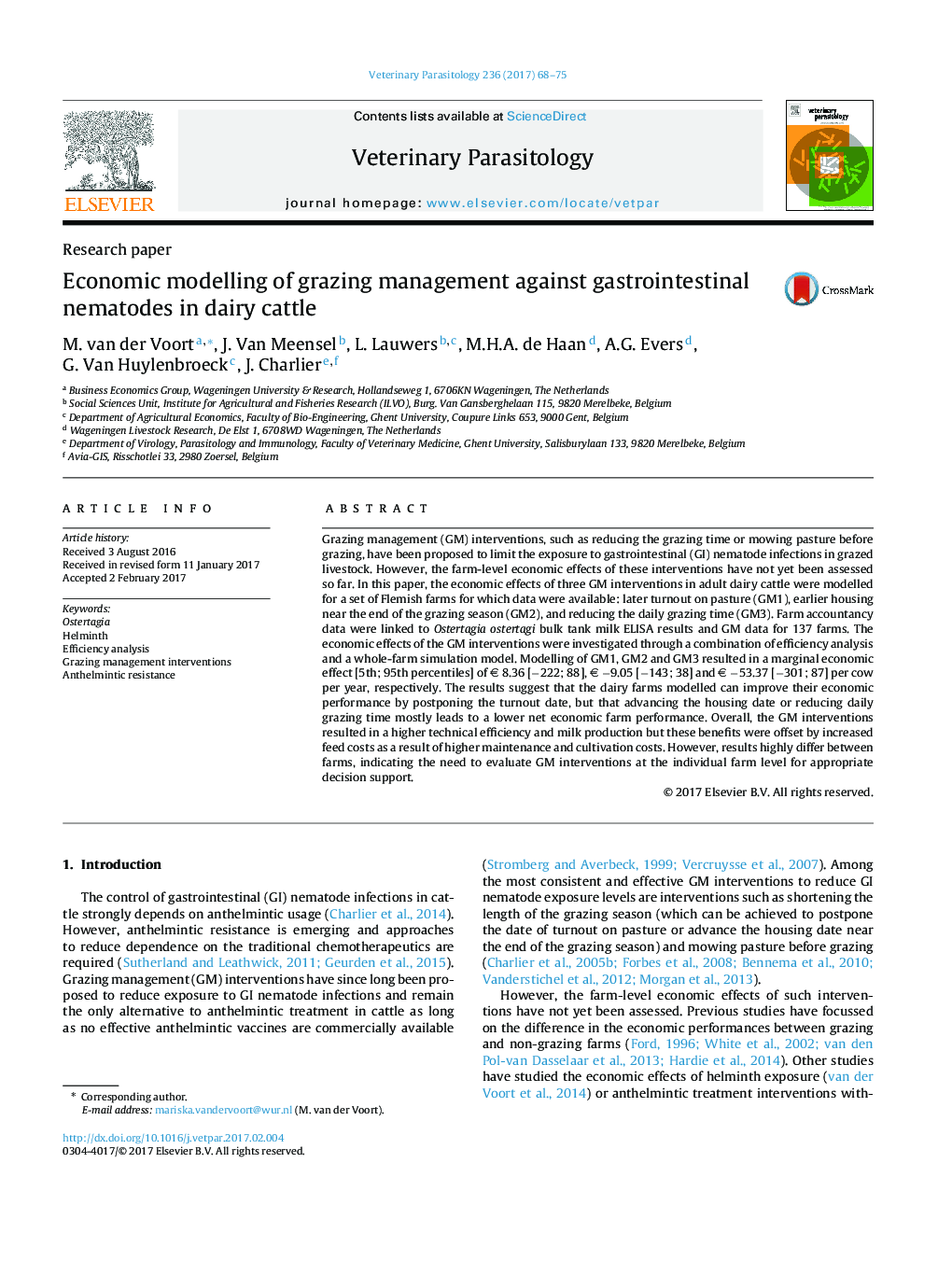| Article ID | Journal | Published Year | Pages | File Type |
|---|---|---|---|---|
| 5545829 | Veterinary Parasitology | 2017 | 8 Pages |
Abstract
Grazing management (GM) interventions, such as reducing the grazing time or mowing pasture before grazing, have been proposed to limit the exposure to gastrointestinal (GI) nematode infections in grazed livestock. However, the farm-level economic effects of these interventions have not yet been assessed. In this paper, the economic effects of three GM interventions in adult dairy cattle were modelled for a set of Flemish farms: later turnout on pasture (GM1), earlier housing near the end of the grazing season (GM2), and reducing the daily grazing time (GM3). Farm accountancy data were linked to Ostertagia ostertagi bulk tank milk ELISA results and GM data for 137 farms. The economic effects of the GM interventions were investigated through a combination of efficiency analysis and a whole-farm simulation model. Modelling of GM1, GM2 and GM3 resulted in a marginal economic effect of ⬠8.36, ⬠â9.05 and ⬠â53.37 per cow per year, respectively. The results suggest that the dairy farms can improve their economic performance by postponing the turnout date, but that advancing the housing date or reducing daily grazing time mostly leads to a lower net economic farm performance. Overall, the GM interventions resulted in a higher technical efficiency and milk production but these benefits were offset by increased feed costs as a result of higher maintenance and cultivation costs. Because the results differed highly between farms, GM interventions need to be evaluated at the individual level for appropriate decision support.
Related Topics
Life Sciences
Agricultural and Biological Sciences
Animal Science and Zoology
Authors
M. van der Voort, J. Van Meensel, L. Lauwers, M.H.A. de Haan, A.G. Evers, G. Van Huylenbroeck, J. Charlier,
